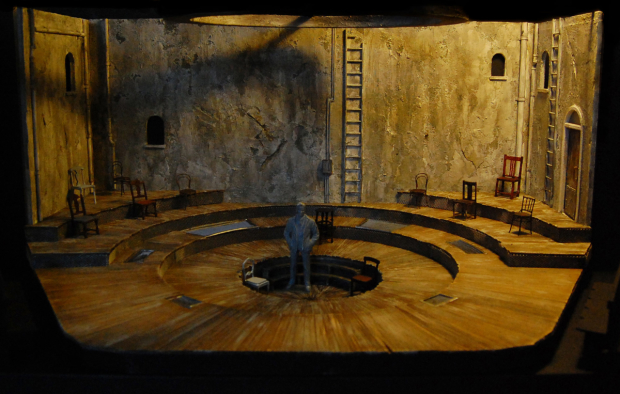Let's Talk About Sets: Andrew Riley on Whisper House
The designer of Duncan Sheik’s new musical, set in America at the height of World War II, explains how he made a lighthouse come to life onstage

Whisper House is set in a remote part of east coast America, in and around an eerie lighthouse at the height of World War II. Around this time President Roosevelt issued the Presidential Proclamation 2537, requiring foreign nationals from Germany, Italy and Japan to register with the government, banning them from certain areas. This eventually led to the incarceration of Japanese Americans to internment camps. It's within this pocket of history that creates the background to our microcosmic ghost story.
From our first meeting the director Adam Lenson and I knew that we didn't want a literal depiction of a lighthouse or stereotypical spiral staircase on stage but instead we wanted to create a space which was suggestive of the setting rather than explicit. Curves became our focal point. I created a series of widening tiered ring decks which could emulate the feeling of a lighthouse and allow for cinematic and fluid movement between scenes.
Adam and I have pretty similar aesthetic tastes, which tend to gravitate towards desolate and crumbling environments. The designs involve a salt-weathered circular array of boards which accentuates the curves of the deck and creates a sense of perspective that leads the eye direct to the heart of the space – the kitchen. Utilising the sub-stage of The Other Palace, the sunken kitchen gives us a multilevel space without comprising the sight lines of the audience. We purposely kept the space sparse with a few simple props and furniture to tell the story. This allows us to repurpose areas for different moments of the narrative.
The technicalities and challenges of designing a musical play at The Other Palace are quite specific. There's no proscenium or wing space and the stage is relatively snug so it was always about carving out the right space for our needs. Interestingly, we've pretty much used every inch of the stage, removing the first two rows from the auditorium, a great adaptable feature of the theatre. All spaces have their challenges, that's all part of the fun of designing for venue specific shows.
From the beginning we knew the band would be an onstage presence, and that became our eerie band backing, our ghost singers, Niamh Perry and Simon Bailey. They are very much part of the staging, split over the two upper levels of the space as the performers inhabit the lower levels of the set.
I relish designing for musicals, this particular show is unique and unlike any I have worked on before. I feel it bridges that gap between a play and a musical. Duncan Sheik's music is incredibly evocative and was a great inspiration when I was thinking about the design. Theatre is all about collaboration and it's always exciting seeing all departments, musicians, lighting, movement, stage management, performers, projection, illusions, sound and crew come together and create something wonderful.
By Andrew Riley
Whisper House opens on 18 April at The Other Palace, with previews from today, and runs until 27 May.













